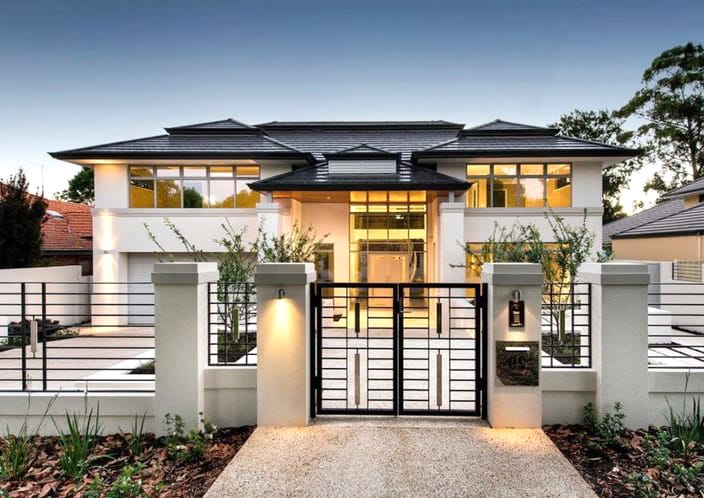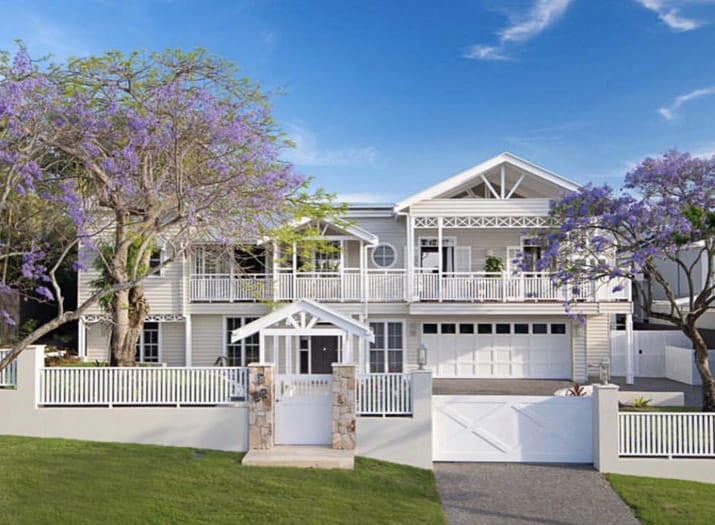A fence can enhance curb appeal, privacy, and security, improving property values. Conversely, an ugly, poorly maintained fence can decrease a property’s value. This is not an all-or-nothing equation.
A study published in The Journal of Real Estate and Financial Economics shows that curb appeal contributes to 7% of a home’s overall value. With the relatively low average cost range of $1,774 to $4,557 to install a fence, this investment can yield a positive return on investment (ROI), but this is not the whole picture.

Curb appeal is not just a fence; it’s landscaping, siding, painting, lawn and everything else that enhances the overall look of the home from the outside.
But curb appeal, is just one aspect, there are five more value-adding benefits of fences.
Ways a fence adds value to your home
Investing in a well-designed and maintained fence is a strategic move to increase your property’s value. Here’s how;
1. Curb appeal
A well-designed fence can enhance curb appeal by adding aesthetic charm to your property, potentially increasing its market value by up to 7%. It’s one of the first things people notice when they see your property. It adds a touch of elegance and sophistication, making your home stand out in the neighborhood.
2. Privacy
Fences create privacy by forming a visual barrier, which is crucial in areas where homes are close to neighbors or public spaces. Solid wood and vinyl fences are particularly effective, as their closely-fitted panels block direct lines of sight. This seclusion is not only a comfort but can also significantly increase property value, especially in densely populated neighborhoods where privacy is highly valued.
3. Security/ safety
Secure fencing increases a home’s market value by enhancing safety. Tall, anti-climb fences, particularly those made of sturdy materials like metal or wood, deter intruders effectively. For example, a metal fence with roller bars adds a security feature that is attractive to buyers, potentially raising property value, as much as 3% to 5%.
4. Marks boundary lines
Fences marking boundary lines enhance a property’s value by clearly defining the yard’s extent. This clarity is advantageous for potential buyers, as it allows them to easily gauge and visualize the property’s size and potential uses, such as gardening or outdoor activities. Additionally, a well-defined boundary through fencing can prevent disputes over property lines, making the property more appealing at the time of sale.
5. Creates a Secure Play Area
Installing a fence transforms your yard into a secure play area, allowing children and pets to enjoy outdoor activities safely. This feature not only ensures their well-being but also enhances the property’s appeal to families.
6. Dampens sound
Fences, particularly solid and high ones made of materials like wood or concrete, effectively reduce noise from busy roads. An 8-foot-high fence can decrease ambient noise by 6 to 10 decibels, a significant reduction given that typical traffic noise measures 60 to 70 decibels. This soundproofing feature enhances home tranquility, appealing to potential buyers who value a quiet environment and can increase a property’s market value, especially in noisy urban areas.

Cost of installing a fence
The cost of installing a fence varies based on the type. Below is a table outlining the price ranges for five common types of fences, along with their expected lifespan:
| Service | Low Cost | High Cost | Lifespan |
|---|---|---|---|
| Wood fence | $1,700 | $4000 | 10 – 15 years |
| Brick fence | $4,080 | $6,630 | Over 100 years |
| Metal/Wrought Iron fence | $3,000 | $5,000 | Over 100 years |
| Vinyl or PVC fence | $2,200 | $5,400 | Over 30 years |
| Composite fence | $2,000 | $4,500 | At least 30 years |
Estimated value added by a fence
Installing a fence can positively impact a home’s value, but your ROI may only be as low as 60% on initial investment. Although the overall contribution of curb appeal accounts for about 7% of a home’s value, this is not the fence alone. The overall dollar value of a home will have an impact on ROI. If you have a $1,000,000 home, then 7% is $70,000, which gives you a large budget for fence installation. Anything under $250,000 gives you $17,000 for all landscaping, fence, paint, siding, roof etc. You can see how ROI can be difficult on less valuable homes.
It’s important to note that the placement and maintenance of the fence are crucial. A well-maintained fence that complements the property’s style and meets practical needs like privacy or security is more likely to enhance property value.
Which fence increases property values the most?
Choosing the right fence to increase property value involves selecting a style that complements the home’s architecture and fulfills functional needs. For instance, a historic 19th-century home would not suit a cheap vinyl fence. Instead, a fence that echoes its historical charm, such as wrought iron or classic wood, is more fitting. This choice not only maintains but enhances the home’s curb appeal.
Moreover, the fence’s function should match the specific requirements of the home’s location. In areas where privacy and security are critical, a 4ft fence would be insufficient. Opting for a taller, solid fence made from materials like dense wood or reinforced vinyl is recommended in these cases. Such a fence addresses both privacy and security needs, thus contributing significantly to the property’s overall value.
Wood
Wooden fences, valued for their natural beauty and versatility, suit many architectural styles, especially rustic and traditional homes. The national average cost for installing a wooden fence is about $2,850. Pine and cedar are favored for their affordability and durability, making them ideal for residential use. For those seeking more premium options, redwood and oak offer enhanced durability and aesthetic appeal, perfect for upscale homes or businesses.
Brick
Brick fences, known for their solid and enduring aesthetic, are a premium choice, especially suited for homes with a stately or classic design. The average cost for installing a brick fence at the front of a property is around $5,100. The cost of a brick fence can vary based on several factors, including the length, height, thickness, and type of bricks used.
Metal/ Wrought Iron
Metal and wrought iron fences, known for durability and elegance, cost around $4,250 on average to install, with higher prices for luxurious wrought iron options. These fences are particularly suited to historic or upscale homes, where their aesthetic appeal and security features are highly valued.
Vinyl/ PVC
Vinyl or PVC fences, known for their versatility and low maintenance, cost about $3,800 on average for installation. Ideal for modern and contemporary homes, they offer a sleek look and withstand harsh weather, ensuring durability and longevity.
Composite
Composite fencing, known for its durability and eco-friendly nature, has an average installation cost of about $3,250. They are particularly well-suited for contemporary and eco-conscious home designs. They blend seamlessly with modern architectural styles, offering a sleek and sophisticated look.






